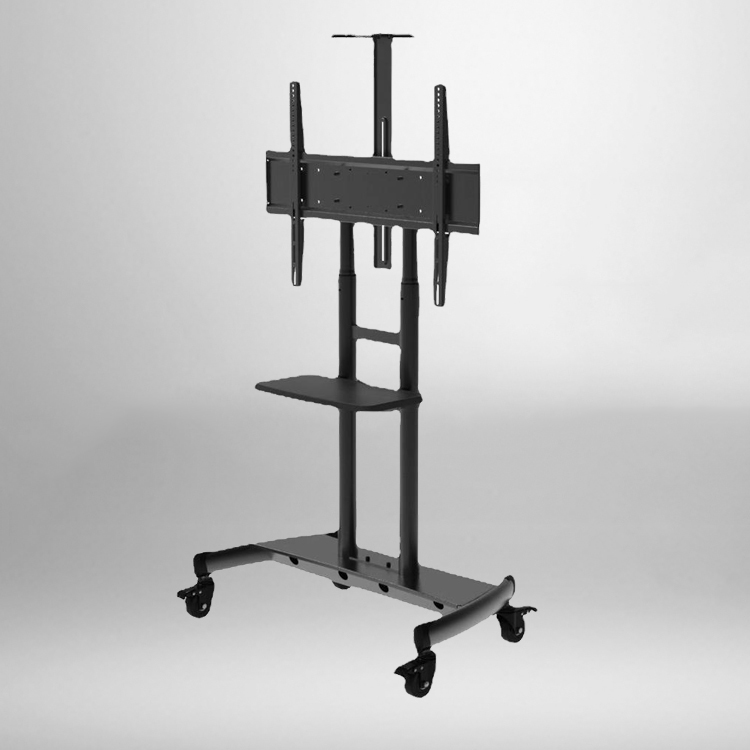
TV brackets, also known as TV mounts or wall mounts, are versatile and adjustable accessories that can be used to mount a television onto a wall or ceiling. They offer various advantages, such as saving space, improving viewing angles, and enhancing the aesthetics of a room. However, not all TV brackets are suitable for all types of televisions. In this article, we will discuss the factors to consider when choosing a TV bracket and explore the compatibility between TV brackets and different types of televisions.
When selecting a TV bracket, it is important to consider the weight capacity, VESA pattern, and the mounting options provided by the bracket. The weight capacity refers to the maximum weight that the bracket can support. It is crucial to choose a bracket that can handle the weight of your television to ensure its stability and safety. Most brackets have weight capacity ranges specified by the manufacturer, and you should choose one that comfortably supports the weight of your TV.
The VESA pattern is another crucial factor to consider when selecting a TV bracket. VESA, which stands for Video Electronics Standards Association, is a standard used to ensure the compatibility between TVs and brackets. A VESA pattern consists of four mounting holes arranged in a square or rectangular shape on the back of the TV. The number and spacing of these holes determine the VESA pattern, which allows for the attachment of the TV to the bracket. It is essential to choose a bracket that has a VESA pattern compatible with your TV to ensure a secure and proper fit.
Mounting options provided by the bracket include fixed, tilt, swivel, and full-motion brackets. Fixed brackets offer a flush mounting option, keeping the TV close to the wall without any tilting or swiveling capability. They are suitable for TVs that do not require any adjustment in viewing angles. Tilt brackets allow vertical tilting of the TV, providing better viewing angles and reducing glare. Swivel brackets, on the other hand, allow horizontal rotation of the TV, enabling viewers to adjust the angle according to their seating position. Full-motion brackets combine tilt and swivel functions, allowing for the most flexible adjustment of the TV’s position. When selecting a bracket, consider the desired viewing angles and choose the appropriate mounting option accordingly.
Now that we have discussed the factors to consider when selecting a TV bracket, let us explore the compatibility between TV brackets and different types of televisions.
TV brackets are generally suitable for all types of televisions, including LCD, LED, OLED, and plasma TVs. The compatibility primarily depends on the weight, VESA pattern, and size of the TV. As mentioned earlier, you should choose a bracket with a weight capacity that meets or exceeds the weight of your TV. The VESA pattern should also match the pattern on the back of the TV. Most brackets have a wide range of VESA compatibility, allowing them to fit various TV models.
The size of the TV refers to its diagonal screen measurement. TV brackets are designed to accommodate TVs of different sizes. Manufacturers usually provide guidelines on the compatible TV sizes for their brackets. It is crucial to choose a bracket that is suitable for the size of your TV to ensure a secure and stable installation.
While TV brackets are suitable for most types of televisions, it is worth noting that some TVs may have unique mounting requirements or be incompatible with standard brackets. For example, curved TVs may require specific brackets designed to fit their curved back panels. It is essential to check the manufacturer’s recommendations and specifications for your TV model to ensure compatibility with a standard TV bracket or to identify any specialized brackets required.
TV brackets are suitable for most types of televisions, including LCD, LED, OLED, and plasma TVs. However, it is crucial to consider the weight capacity, VESA pattern, and mounting options provided by the bracket when selecting one for your TV. By choosing a bracket that meets the weight and VESA requirements of your TV and considering the desired mounting options, you can ensure a secure and proper fit for your television.


